Europe & Turkey—Day 27: Assos and Troas
Posted by DrKoineApr 26
April 26, 2010 (Monday)
Up early and to breakfast, which is pretty minimal at the Iskender, with not even a bowl of cereal. 🙁 Jerry still insists he is going to have a great day anyway. If you knew how much Jerry loves breakfast, you would know he was being a real trouper!
On the Road Again. After “breakfast,” we start off for Assos. Assos was a stop for Paul and company on the return of the 3rd missionary journey (Acts 20:13–14). We basically follow the main highway in this part of Turkey, D550, which also is E87, that runs on up to the major city of Canakkale. So we just keep following signs to Canakkale. We travel pretty much along the coastline with the big island of Lesbos on the sea’s horizon off to our left. Highway D550 eventually departs inland from the coastline to take a valley pass through some foothills that run to the edge of the seacoast. As we reach the city of Ayvacik, we are glad to see a sign directing us to turn left to go to Assos. The highway actually has a number, 17-51, but that is not to say this is a highway. Off we go down small streets, through several villages, where, without fail at each village, there’s at least one small café with a bunch of Turkish men sitting around doing nothing. What is that? Unemployment? Laziness? We noted the same thing in 2002.
Assos. We finally arrive at the “modern” village of Behran on the coast close to the ancient site of Assos. “Modern” is a relative term here. Let’s just say there’s one broken down car and no golden arches, so you get the picture. We notice that tourists are walking down a steep hill, so Jerry hikes up the hill to figure out where to go. In fact, this hill is the acropolis of ancient Assos. He finds the bilet (ticket) booth and comes back to get me. It’s a long climb up this hill, but we finally make the ticket booth with a few breaks for me.
Athena Temple. We go in the gate and climb some more. At the top of the acropolis is a temple to Athena and a view of the Assos harbor below. Too bad the weather is so grey today. The view on a sunny day would be spectacular. A nice display nearby educates visitors to the construction and significance of the Athena Temple, including a full-color drawing and a scale model.
The following panorama view of the Mediterranean Sea is from high up on the acropolis of Assos. To get this shot, Jerry, of course, is right on the edge of the acropolis ledge. (Where else?) The Assos harbor is the faint white jut out into the sea to the far left of the image.
Here is a shot of the Assos harbor far below the acropolis using the full zoom of the camera. You can see how the harbor is still in use today.
We watched a squirrel sitting on one of the boulders, so we can add an Assos squirrel to our animal collection for the trip (Laodicia lizard, Perge turtle, Derbe prairie dogs, etc.).
Assos Theater. After hiking back to the car, we drive down the steep hillside to visit the harbor. We travel along a narrow, treacherous, and winding road, which is rather nerve wracking to me. Jerry is quite the pro, especially at figuring out pullover spots anticipating when we need to let cars coming back up from the harbor get by us. On the way, we pass the Assos theater. We stop so Jerry can go take pictures of the theater. The theater is not that well preserved past its first section. However, you still can imagine how beautiful the Mediterranean navy blue made for a backdrop to this theater!
Harbor Lunch. We finally arrive at the harbor, which is beautiful and quaint. We find a restaurant, use their facilities, and eat lunch at a table by the water. The fish was freshly caught. I had brim and Jerry had a swordfish kabob. The food was delicious, and the scenery so picturesque—even on a cold, cloudy, windy day.
We are having lunch at the harbor where Paul would have joined back up with Luke and others for the trip on down to Miletus after walking by himself down the Roman road from Troas to Assos at the end of the 3rd missionary journey (Acts 20:13–14). Paul was here!!! Even with the inclement weather proving a challenge for getting the postcard-pretty pictures he always wants, Jerry could not have been more content.
After our main dish, we have the traditional hot Turkish tea, which is so wonderful in the chill of the air, and then pay the 85TL bill. The money was well worth the experience, and made up for our hotel back in Bergama this morning serving only a minimal breakfast (not even cereal). Jerry was right. We did have a great day anyway!
Roman Road. After lunch, we head off for Alexandria Troas, which is about 60 km to the northwest of Assos. Rather than going back up the little 17-51 road we came down to the coast on and then catching the D550 superhighway back at Ayvacik, we decide to take the scenic route running right near the coastline. This route, which is highway 17-52, in part actually follows the old Roman road that ran from Troas to Assos. That decision turned out to be a great one—quite fortuitous!
As we are driving along, I remembered that our friend, Mark Wilson, during our harbor dinner at Izmir had said that a part of the ancient Roman road is visible between Assos and Troas, so I started looking to see if I could spot any remains as Jerry was driving. I suddenly catch a glimpse of what I think is the old Roman road. Jerry stops, backs up, pulls over to the side of the road, and disappears down the embankment to investigate the situation. He comes back up to announce excitedly, that, sure enough, what I had glimpsed is clearly a portion of the ancient Roman road! We know that Paul traveled overland from Troas to Assos by foot while his companions took a ship down to Assos (Acts 20:13–14), so Paul would have walked this road.
What a feeling to walk that road! The day is quite overcast, quite windy, and quite cold, but the experience of walking where Paul walked is definitely worth braving the elements.
Catching this unmarked Roman road was lagniappe fit for a king as far as Jerry was concerned. He relished the discovery and soaked in the moment thoroughly. Today was our last full day of touring, and Jerry finally got to walk a Roman road Paul had walked on this trip. We were locked out of the Roman road uncovered in downtown Tarsus, and we missed finding the Roman road on the way to Derbe, so this looked like the trip overseas where Jerry never would have the chance to walk a Roman road. Yet, here by the mere coincidence of a spontaneous decision to take the scenic route by the sea rather than the superhighway inland, we find a Roman road we know Paul walked. Yes, indeed, Jerry was right early this morning. We truly did have a great day!
Doesn’t matter whether anything is there to be seen, my Pauline scholar just wants to walk any road the great missionary to the Gentiles walked. I can tell his sense of indebtedness to Paul is keen. My devoted scholar mused that had Paul not walked this road, he might never have heard the gospel of saving faith in Christ. To be such an academic, Jerry sure has a devotional spirit.
We proceed along the mountain foothills following the meandering, narrow highway through small villages and pastoral scenes with sheep grazing. As we are traveling, we saw a man riding a donkey down the road. The sight provoked me to wonder out loud to Jerry whether perhaps Paul rode a donkey during any of his travels. I then immediately followed that up with a comment wondering if they had “Avis Rent-A-Donkey” available back then. We had a good laugh at that thought.
Dalyan. We got to Dalyan, a village on the Mediterranean coast close to Troas. We wanted to visit the beach where we had taken one of my favorite photos from the 2002 trip. This time however, the skies were heavily overcast, with a front moving in and the wind blowing stiffly, producing a serious wind chill factor. We take a picture on the beach, but the contrast from the 2002 picture could not be more dramatic! This time is absolutely freezing with the wind blowing really hard and no sun. In 2002 the day was sunny, warm, and beautiful when we were here. Compare for yourself below!
Troas. On to Troas, only a few kilometers inland form the Dalyan beach, where we find a “car park” on this go-round—the place has developed just a little since we last were here. Jerry reveres the site of Troas, since, he points out, Troas is where Paul’s 2nd missionary journey really got kicked off in earnest after Paul had gotten off track in his fight with Barnabas over John Mark (Acts 15:36–40). At Troas, Paul received a renewed sense of call to mission and specific direction from God in his famous “vision of the Macedonian” (Acts 16:8–10). The stopover at Troas also is important because Troas is where Paul picked up Luke, his lifelong and trusted missionary companion. This connection of Luke to Troas is implicit in the Acts text, because the narrative shifts from third person to first person plural, “we,” right at this point in telling the vision of the Macedonian—the beginning of the first of three “we sections” in the text in Acts (Acts 16:10). So Jerry loves to visit Troas, even with hardly anything above ground to see there.
Just as we arrive, a man who is the attendant at the ticket gate is about to leave the site on a motorcycle, apparently at the end of his workday. However, though he probably could have driven on off, leaving us without assistance or direction, he stops when we pull up. He is kind. He offers to stay, even with the inclement weather. He gets back off his bike, and proceeds to show us all the newer excavations, which are very interesting. He even gives us a schematic of the archeological site, which is nice to have to orient to where various ruins are scattered about in the thick overgrowth. The schematic is in German, but Jerry gets his bearings with this resource.
The site is very overgrown, so we have to walk through tall grasses and weeds waist high at times. Our guide moved fast. Quite a tour—he even showed us some human teeth from a jawbone that they found during excavations. Just as we arrive back at the car, rain begins a steady, cold drizzle, so I wait in the car while Jerry dons his poncho and heads back to take some pictures. The “tour” the attendant led us on was so fast that Jerry had no time to compose pictures. He regrets that he cannot give much information about the significance of the finds, since he did not even have time to jot down any notes as the attendant talked while walking rapidly along. Jerry is glad to see this part of the site has had some attention since our last visit in 2002, but he wishes descriptive signs could be posted!
The terracotta piping so common to Roman period construction is evident now at Troas. One nicely preserved section was just sitting propped up on the ground. Jerry speculates the second image is a cistern fed by a terracotta pipe for collecting rain water.
The foundations of buildings and temples are evident now that we never saw in our first visit. The outlines of the typical broad, collonnaded streets can be determined in conjunction with the remains of these buildings.
Below is pictured the remains of the odeon, which is the smaller theater intended for musical performances, poetry recitations, and other assemblies. The outline of the seating area is more evident in person than in the image.
Some of the lintels for the collonnaded streets or entrances into buildings allude to a former grandeur for Troas. Apparently, the archeologists do not have the columns that go with these lintels, or else do not have the necessary heavy lifting equipment and cranes such as we saw at the on-going work at Laodicea. That kind of machinery takes a boatload of money.
The rectangular base in the picture below has a Latin inscription. The pedestal probably represents an honorarium for a leading citizen or public official of Troas.
The levels of earlier occupations in centuries gone by that are hidden away just a few feet beneath the present ground level are apparent in these images.
Fortunately the structure below has been identified. A sign leaning up on a block to the right in the picture gives some information in German. These steps are all that is left of the Agora Temple that was next to the Troas market. The structure apparently had been misidentified in earlier work, because the description used to be the Temple of Augustus.
Down the road a little on the other side of the highway is the site of the Herod Atticus arches, the most visible ruins of ancient Troas left behind today, which we had explored before. This part of the site, however, now is very overgrown and hardly recognizable, and makes Jerry very sad that no one is taking care of the beautiful treasures. Herod Attitcus was a wealthy, 2nd century Greek aristocrat and Roman senator who also was a Sophist philosopher. He always was in good standing with successive emperors. Emperor Hadrian appointed him prefect of the free cities of Asia in 125, and emperor Antoninus Pius appointed him as a consul in 143. During his life, Herod Atticus was well known for his philanthropy and gifts to public works. One of these gifts was the aquaduct system at Troas that helped support a bath complex in the eastern part of the city. The arches for the aquaduct can barely be seen in the background of the picture below, as well as some surviving arches in the foreground of the bathhouse complex.
Canakkale. After finishing the Troas site, we retrace our steps back to Dalyan, catching 17-52 to head east over to Ezine, where we can pick up the main highway again (D550), turning almost due north to drive on up to Canakkale, our stop for the night. We will have a long, hard drive tomorrow to get all the way from Canakkale to Istanbul, turn in our rental car at the Istanbul International Airport, catch a taxi back out to our hotel, and still have an hour or two in the late afternoon to catch the Istanbul Archeological Museum before flying out of Turkey the next morning. This trip is jammed packed to the last minute!
Congested Canakkale. The Garmin takes us straight to congested downtown Canakkale where the hotel is supposed to be, but we cannot find the hotel anywhere. Major road construction is a problem again, making navigating the downtown area a mess. The Garmin keeps saying “turn,” and we cannot turn because of construction—and we cannot read the street signs. So the Garmin goes into an infinite loop of “recalculating.” Worthless. We find a tourist information office in bustling downtown Canakkale, so Jerry pulls over, and I go in to ask for directions. I learn that our hotel is not “in the city of Canakkale” but back out somewhere on the highway we came into town on! Oh, brother! Since we already have passed up the hotel somehow, even though looking everywhere for signs or the hotel name, then how are we supposed to find our hotel where our reservations for the night are? So, the Garmin was completely and totally wrong. Our hotel is nowhere near downtown Canakkale. It’s actually quite a way back in a different community, a suburb of Canakkale I guess you might say. Since the Garmin was useless, how did we find the hotel? A miracle, Jerry says, because Jean is “very observant” (an in-house joke between us).
Unidirectional Signs. By chance I just happened to see important signs that I recognize as the community in which our hotel is situated, and these signs finally lead us to the hotel. Curiously, though, we suddenly realize these signs are viewable only coming back out of Canakkale, the direction we now are traveling. These signs to the hotel are not viewable in the direction we came in on. Jerry was so glad I caught sight of the signs we needed to find the hotel (because I am “very observant”). I guess for our second to last hotel of the entire trip to be easy to find would have been too much to ask. Generally, locating our hotels has been a serious challenge on this trip.
We finally arrive at 6 pm. Fortunately, dinner is not until 7:30, and lots of Korean tourists are here. To be quite honest, we find Korean tourists everywhere in Turkey to be quite rude in general. These Koreans were no different. I remembered the remarks of our sweet Pammukale hotel owner, Judy, who had served us hot tea and allowed us to use her hotel wifi even though we were not staying at her hotel. Judy had stated in a rather matter of fact way as we talked about tourists from around the world that she would rather deal with anyone else besides Korean tourists. As a hotel proprietor, Judy found the Koreans to be extremely demanding, always driving too hard for room rates and meal prices that simply were beyond reason. She said she had to have other tourists just to support the Koreans, and if all she had were Korean tourists, she would be out of business in a month.
Fortunately in this hotel we are able to connect to wifi in the lobby so I can call mother. We go back to our room to repack everything for the final leg home and organize ourselves. We have to be up quite early to hit the road for a very long driving day to make Istanbul tomorrow.
For a video of the Assos and Troas action today:
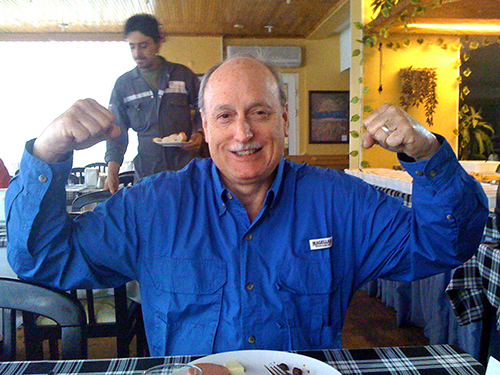
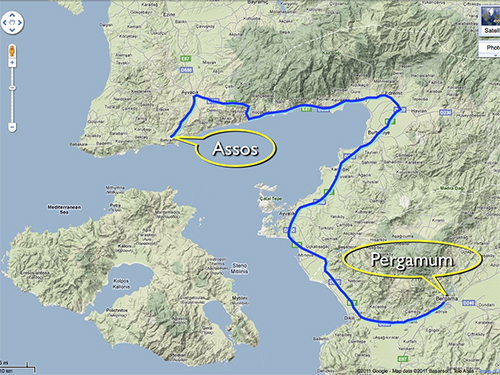
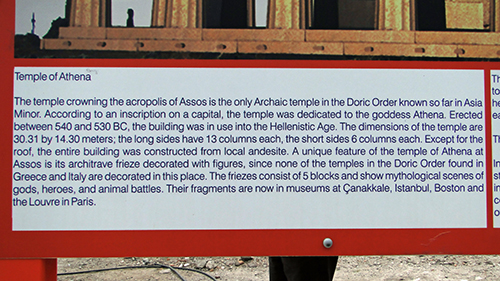

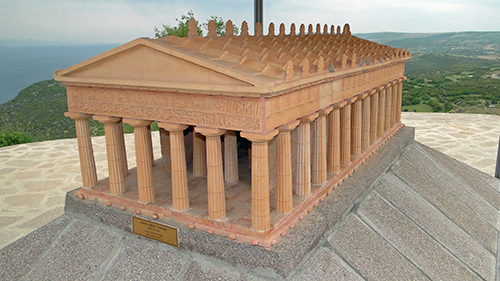
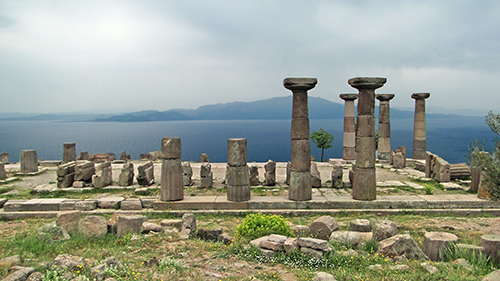
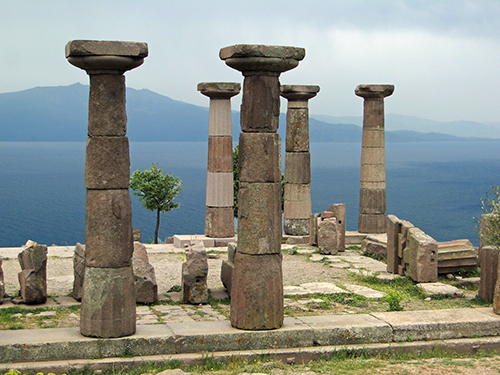

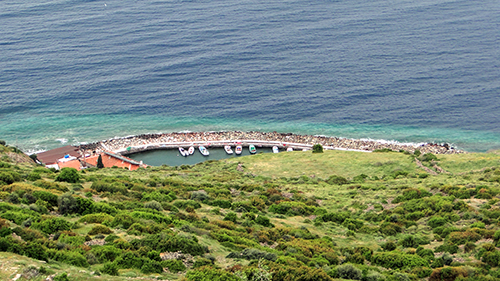
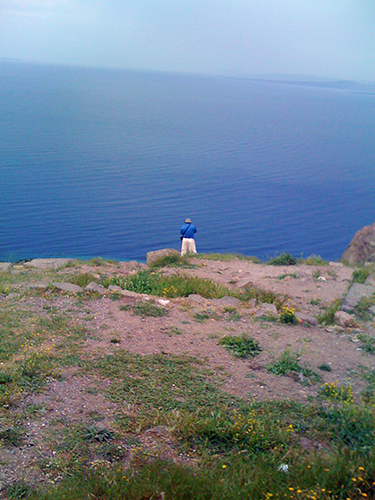
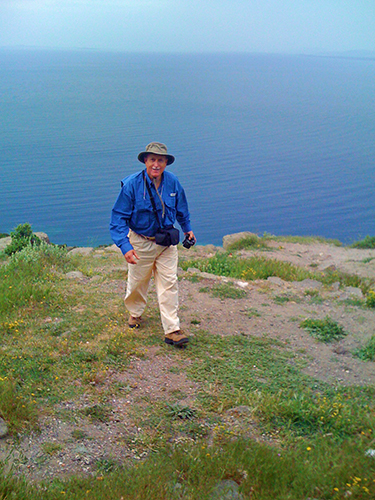
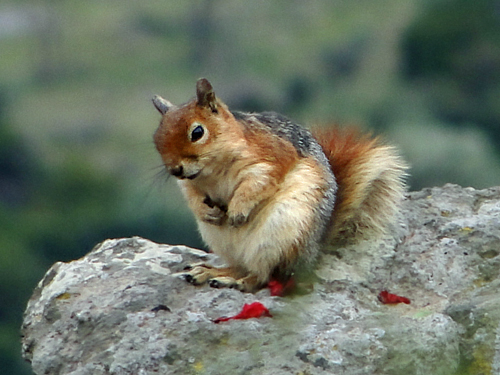
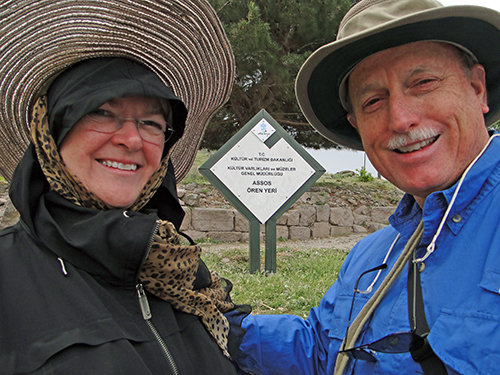
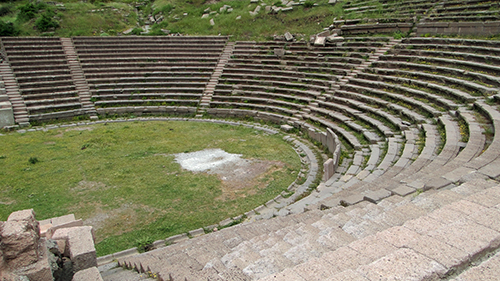
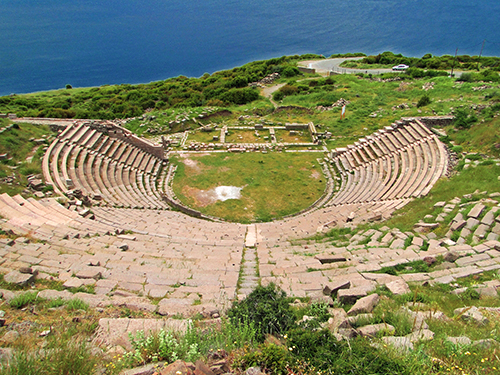
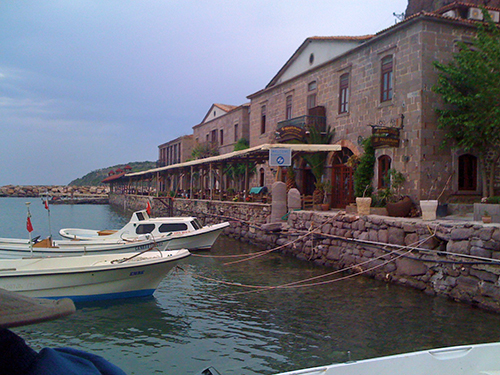
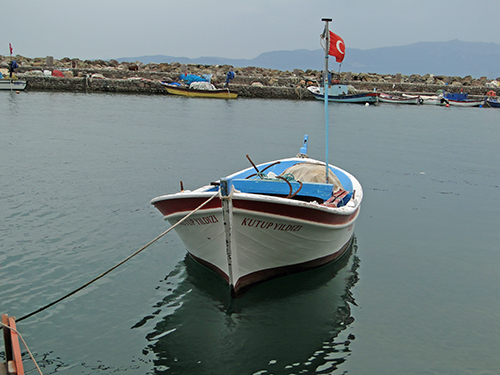
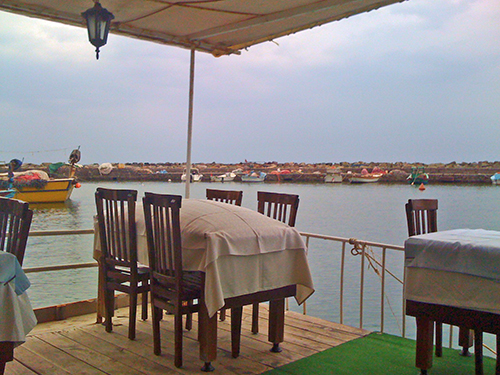
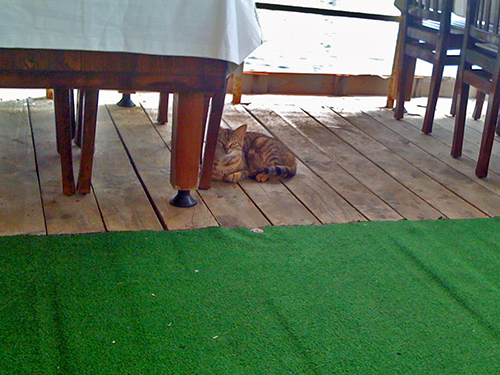
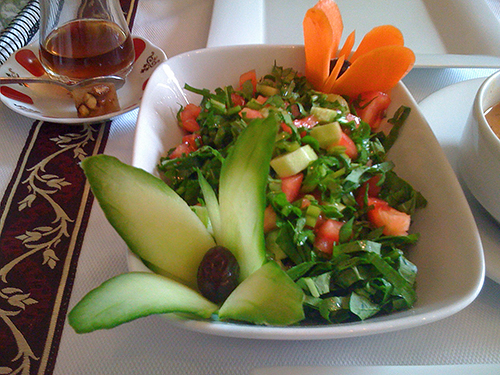
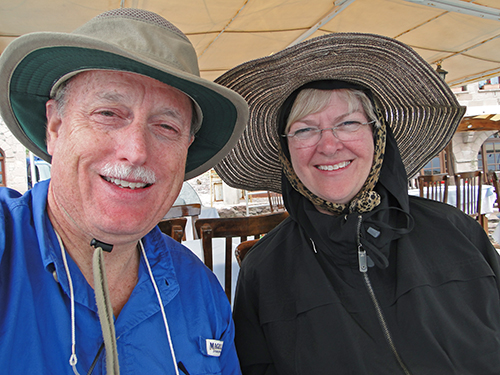

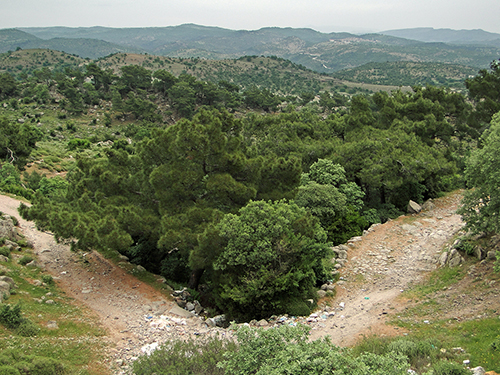
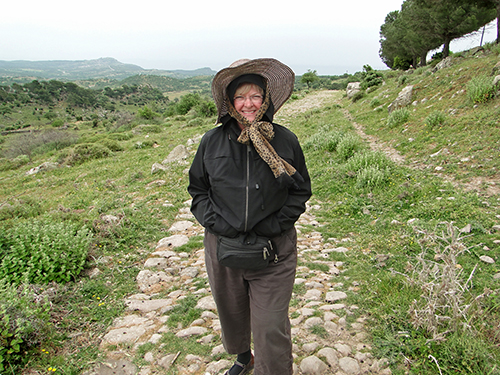
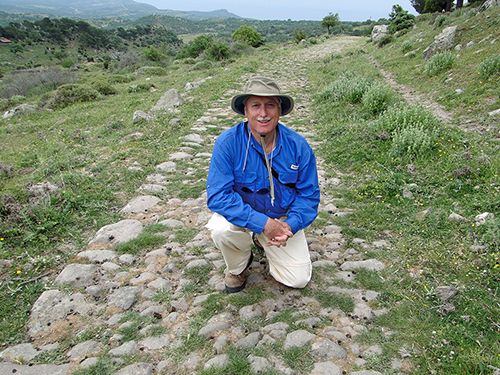
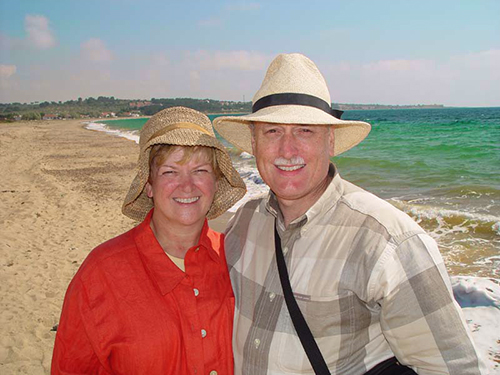
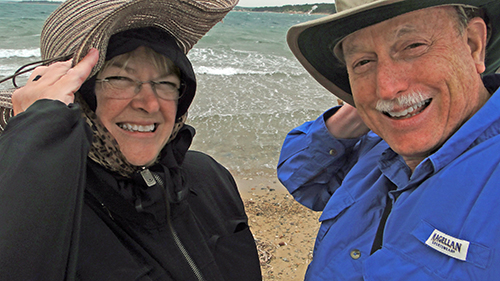
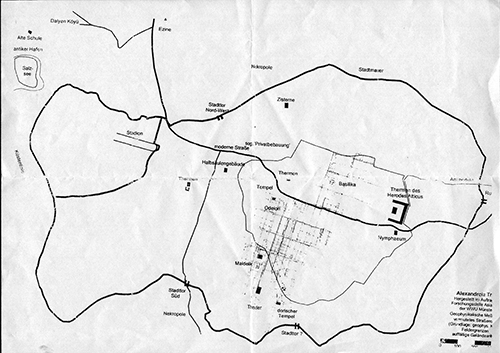
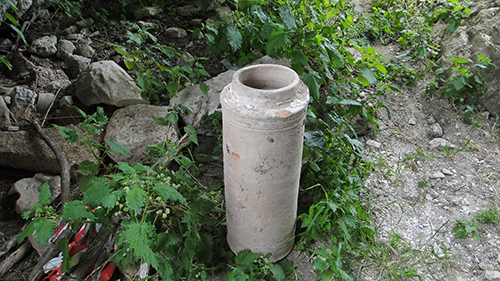
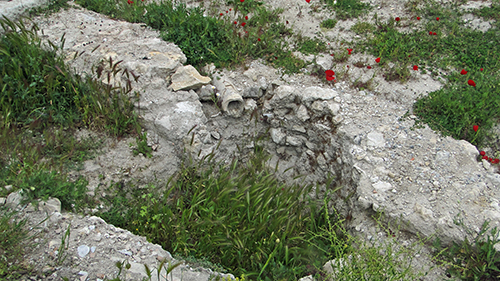

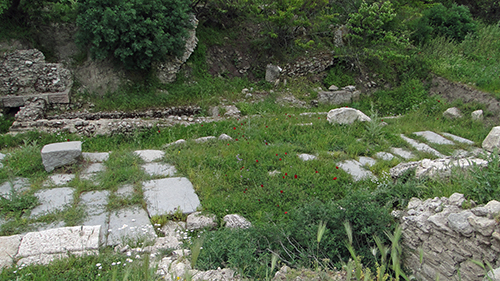
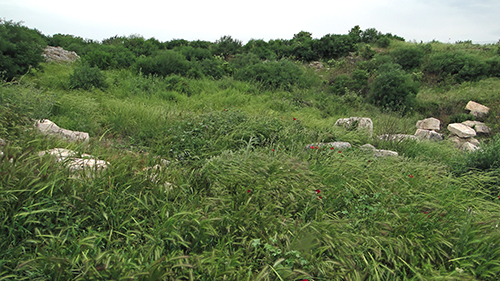
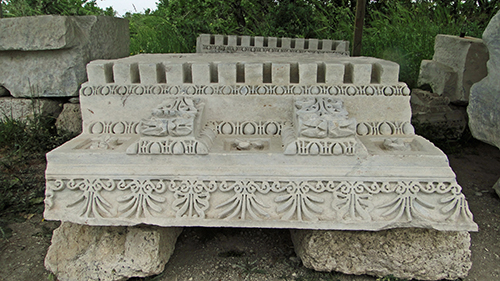
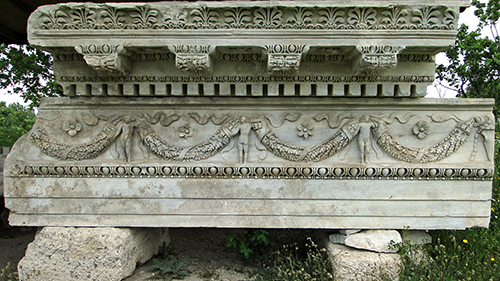
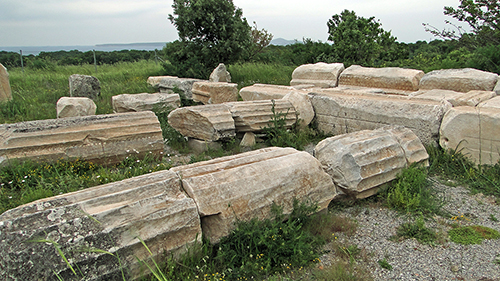
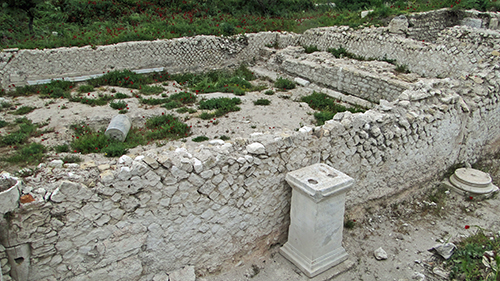
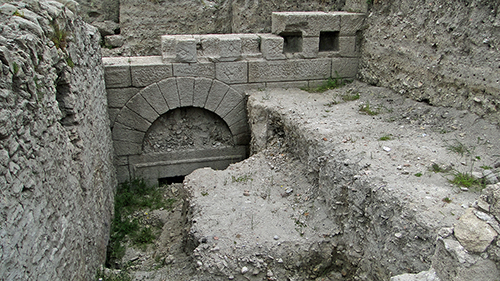
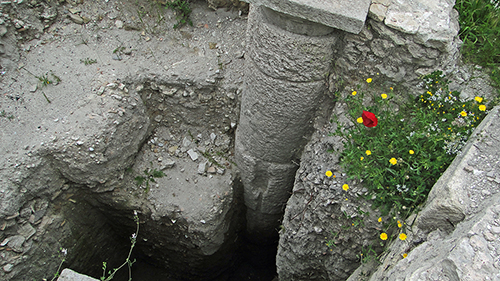
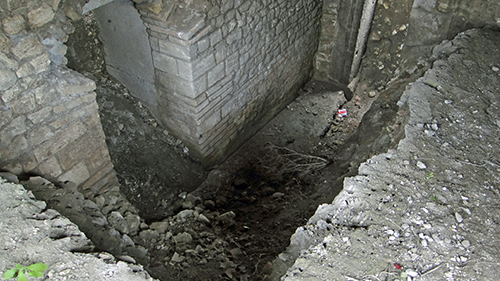
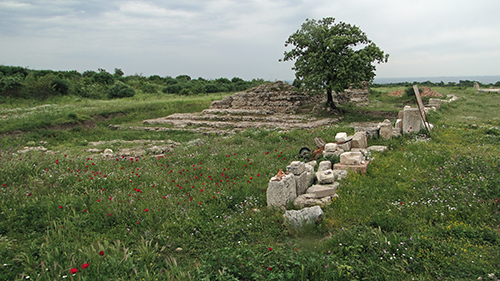
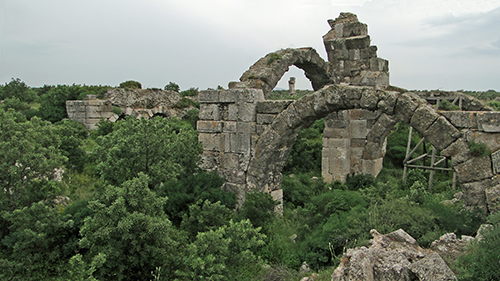
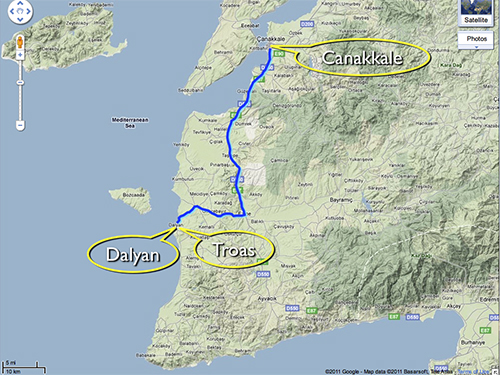
No comments